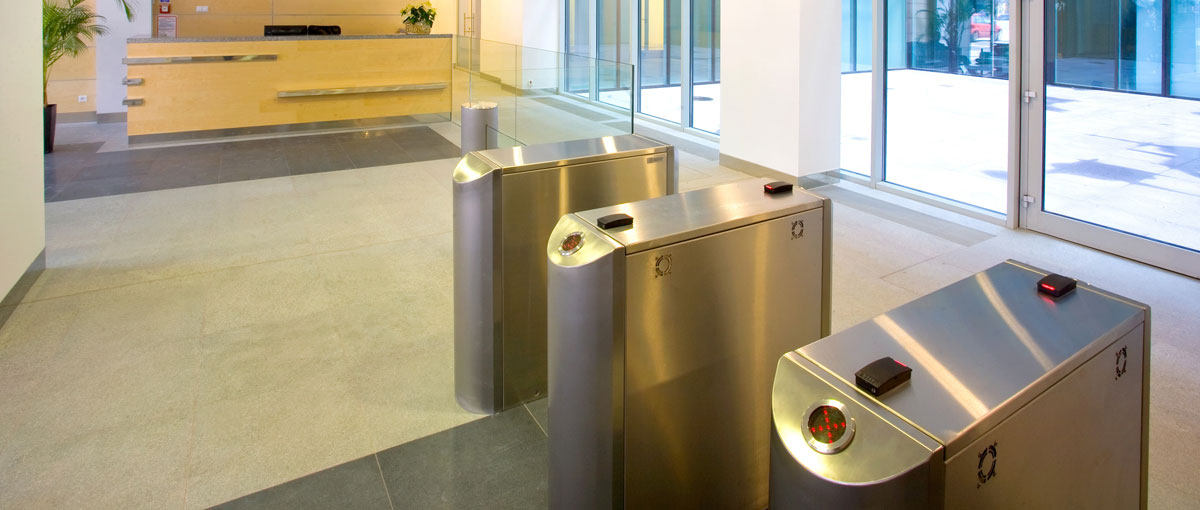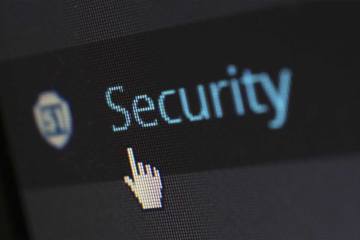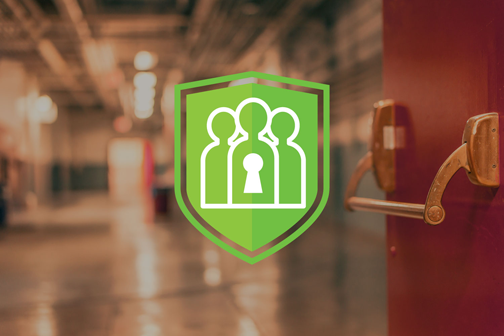Biometric Access Control Systems Westchester, NY
Biometric security systems prevent unauthorized individuals from accessing restricted areas. They work by precisely establishing a person’s identity based on an individual’s unique physical attributes such as fingerprints, retina/iris patterns or even voice patterns. Measuring both physiological and behavioral traits, biometric systems provide you with a fast and reliable way to collect and compare biometric data against a database to control access points in your facility.
Westchester is a business center benefitting from biometric systems.
Adjacent to New York City, Westchester, NY is home to over 30,000 businesses including the headquarters and operations of Fortune 500 to small and medium sized businesses. With over 400,000 people employed and hundreds of thousands of visitors each year, management’s need to control, authorize, restrict and log movement throughout their properties has never been more important.
Who uses biometric systems in Westchester? In fact, identifying an individual’s unique traits is widely used in security systems for a large range of businesses from retail to service businesses, corporations and even distribution, storage and manufacturing facilities. All of these businesses can use biometric security to mitigate risk and, in many cases, reduce security staffing costs.
Stay in command of your facility. Add biometric technology to traditional security solutions to protect what matters most.
Our world is more connected than ever. Don’t let an old security system reduce your degree of confidence, especially when it comes to identifying, verifying and authenticating personnel. Call (631) 209-2600 or contact us online to schedule a FREE biometric access control evaluation. We design, install, maintain and service Biometric Access Control Systems.
Digital Provisions’ Biometrics Security Solutions—Design. Install. Maintain. Service.
Biometric Security Explained
Biometric identification has a growing role in our everyday security. Physical characteristics are relatively fixed and individualized — even in the case of twins. Each person’s unique biometric identity can be used to replace or at least augment password systems for computers, phones, and restricted access rooms and buildings.
Once biometric data is obtained and mapped, it is then saved to be matched with future attempts at access. Most of the time, this data is encrypted and stored within the device or in a remote server.
Biometric Access Control can take the place of traditional access control card readers. No lost card issues, your face, finger, eye, or voice is your passport.
Keeping Students Safe
One of the most obvious applications of biometrics in schools is the use of scanners for security purposes. Verifying an individual’s fingerprint or iris to authenticate their identity is an effective way of keeping students and faculty out of harm’s way. These can also prove to be helpful in other areas where students are expected to go throughout the school day, such as the cafeteria.
When a suspicious individual attempts to enter the school, scanners can prevent them from doing so. In a worst-case scenario, surveillance cameras can recognize when an unauthorized person has entered the premises and automatically engage lockdown protocols.
Fingerprint Scanning
Fingerprints are one of those bizarre twists of nature. Human beings happen to have built-in, easily accessible identity cards. You have a unique design, which represents you alone, literally at your fingertips.
People have tiny ridges of skin on their fingers because this particular adaptation was extremely advantageous to the ancestors of the human species. The pattern of ridges and “valleys” on fingers make it easier for the hands to grip things, in the same way a rubber tread pattern helps a tire grip the road.
The other function of fingerprints is a total coincidence. Like everything in the human body, these ridges form through a combination of genetic and environmental factors. The genetic code in DNA gives general orders on the way skin should form in a developing fetus, but the specific way it forms is a result of random events. The exact position of the fetus in the womb at a particular moment and the exact composition and density of surrounding amniotic fluid decides how every individual ridge will form.
So, in addition to the countless things that go into deciding your genetic make-up in the first place, there are innumerable environmental factors influencing the formation of the fingers. Just like the weather conditions that form clouds or the coastline of a beach, the entire development process is so chaotic that, in the entire course of human history, there is virtually no chance of the same exact pattern forming twice.
Consequently, fingerprints are a unique marker for a person, even an identical twin. And while two prints may look basically the same at a glance, a trained investigator or an advanced piece of software can pick out clear, defined differences.
This is the basic idea of fingerprint analysis, in both crime investigation and security. A fingerprint scanner’s job is to take the place of a human analyst by collecting a print sample and comparing it to other samples on record. In the next few sections, we’ll find out how scanners do this.
Eyes-Retina / Iris Recognition
How does Retinal scanning work? A retinal scanner uses infrared light for mapping. As a person looks into the eyepiece, an invisible beam of low-energy infrared light traces a circular path on the retina at the back of the eye. The blood-filled capillaries absorb more of the infrared light than the surrounding tissue.
Biometric iris recognition scanners work by illuminating the iris with invisible infrared light to pick up unique patterns that are not visible to the naked eye. Iris scanners detect and exclude eyelashes, eyelids, and specular reflections that typically block parts of the iris.
Facial Recognition
You might be good at recognizing faces. You probably find it a cinch to identify the face of a family member, friend, or acquaintance. You’re familiar with their facial features — their eyes, nose, mouth — and how they come together.
That’s how a facial recognition system works, but on a grand, algorithmic scale. Where you see a face, recognition technology sees data. That data can be stored and accessed. For instance, half of all-American adults have their images stored in one or more facial-recognition databases that law enforcement agencies can search, according to a Georgetown University study.
So how does facial recognition work? Technologies vary, but here are the basic steps:
Step 1. A picture of your face is captured from a photo or video. Your face might appear alone or in a crowd. Your image may show you looking straight ahead or nearly in profile.
Step 2. Facial recognition software reads the geometry of your face. Key factors include the distance between your eyes and the distance from forehead to chin. The software identifies facial landmarks — one system identifies 68 of them — that are key to distinguishing your face. The result: your facial signature.
Step 3. Your facial signature — a mathematical formula — is compared to a database of known faces. And consider this: at least 117 million Americans have images of their faces in one or more police databases. According to a May 2018 report, the FBI has had access to 412 million facial images for searches.
Step 4. A determination is made. Your faceprint may match that of an image in a facial recognition system database.
In general, that’s how facial recognition works.
Voice Authentication
How Speaker Verification with Voice Recognition Works
Voice recognition technology is possible after making a digital model of an individual’s voice that can serve as a stored profile or template of that voice print. Words and phrases are broken down into various kinds of frequency patterns that, taken together, describe someone’s unique way of speaking. The templates are stored in databases for matching like other kinds of biometric data.
These systems can be text dependent or text independent (and sometimes a combination) and used, for example, to control access. For the first option, numbers or phrases can become spoken passwords that can be compared to a sample of those same words that was acquired during enrolment. Text independent technology does not require a pass phrase but analyzes the speaker’s free speech for unique vocal characteristics.
Big pluses of speaker verification are its widespread acceptability and ease of use for callers, as well as the relative inexpensiveness of basic systems compared to some other biometric options (especially if voice authentication is integrated into a telephony system for, say, a financial services firm that already has voice recognition as part of its customer service).
Not surprisingly, most applications for speaker verification involve a phone, for such commonplace actions as conducting telephone banking or consumer transactions, password reset and checking customer accounts of many sorts, and securing access to the very telephones themselves.
Key Benefits of Installing Biometric Access Control Systems
- Unique to the user and difficult to duplicate which provides an added security
- Provides a higher level of accuracy which eliminates the risk of granting unauthorized individuals access to restricted areas
- Provides easy access and entry management
- Can’t be lost or forgotten compared to keycards
- Time-efficient – most biometrics are able to identify users in under a second, eliminating time delays caused by manual identity checks
- Reduces costs – can help companies save money by reducing the need for dedicated security staff to man access points
- Can create blacklist of people not permitted on premises, so system can automatically send alerts to security or administrative staff based on a biometric entry attempt. We can attach associated video along with the notification, showing the attempted entry.
Installing a biometric access control system is an effective solution of improving security of any business. Combined with perimeter protection, security systems, alarm systems and other business security systems, biometric systems create an additional layer of protection for enterprises and small business alike.
Contact Digital Provisions today to schedule your FREE security evaluation. Call (631) 209-2600 or contact us online.





